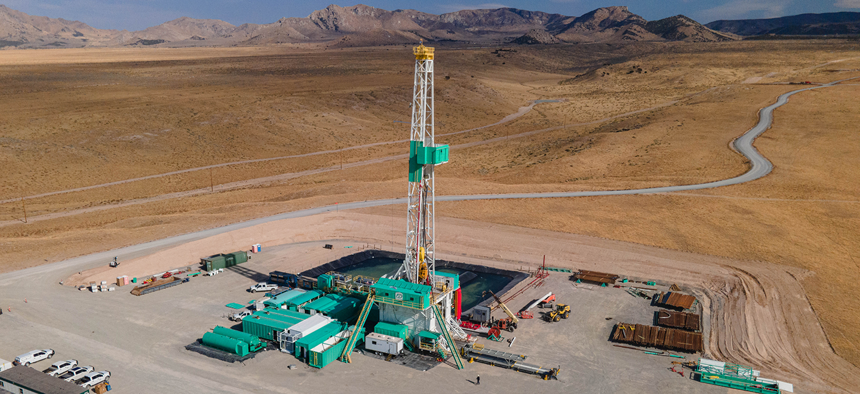
This November 2020 photo shows the drilling rig at the Utah FORGE geothermal project site in Beaver County, Utah. UTAH FORGE
Geothermal energy easing US military's logistics challenges
DIU is doubling its investment in new technology to harness the heat of Earth's core.
A new take on an old energy source is increasing energy resilience at a growing number of DoD installations.
On Tuesday, the Pentagon's Defense Innovation Unit announced that it is doubling to six the number of technology companies involved in an initiative to use advances in geothermal energy technologies, which draws upon liquid heated by the Earth, is carbon neutral, and doesn’t require long and vulnerable supply lines.
“With the addition of three more novel technology companies in this ‘groundbreaking’ initiative, DoD is doubling its efforts to leverage advancements in geothermal commercial technologies for energy resilience and support DoD carbon free energy goals,” Michael Callahan, a senior advisor and program manager for the Defense Innovation Unit’s energy portfolio, said in a statement.
The idea of using the Earth’s heat to produce energy goes back centuries. Vikings used it for bathing and to heat homes before Icelanders used it to run turbines and produce electric power. But not every place can be Iceland, which boasts abundant underground hot water as well as high volcanic activity.
New techniques called enhanced and advanced geothermal systems have the potential to greatly expand the areas where the Earth’s heat can be tapped for power.
With enhanced, Callahan said, “You're creating a human-made underground hot reservoir. You're drilling deep enough into the earth to reach sufficient temperatures, pumping fluids into the earth and extracting the heated fluids that you can use to generate electricity. And then ‘advanced’ is where you have a closed-loop system” so the fluid doesn't come in direct contact with the rock.”
And AI tools are helping to identify places with closer-to-the-surface geothermal reservoirs or hot dry rock.
Last September, the Defense Innovation Unit announced agreements with three companies—Eavor Inc., Teverra, and Zanksar—for projects at four Air Force and Army installations in Alaska, California, Idaho, and Texas.
They will now be joined by Fervo Energy, GreenFire Energy, and Sage Geosystems for new projects at Naval Air Station Fallon, Nevada; Naval Air Facility El Centro, California; and the Army’s Fort Bliss in Texas.
Last summer, Fervo said its Utah system had reached 3.5 megawatts, enough to power a small town or a Google data center and now has broken ground on a 400 MW geothermal power plant project. That amount of power could more than keep an installation fighting in the event of cyberattack or fuel-supply disruption and even power surrounding communities and cities.
Compared to other forms of energy, geothermal presents far fewer supply and resupply issues. There’s also no concern that by acquiring it, the Defense Department may be giving an economic boost to a potential adversary. Russia, for instance, is paying for its war against Ukraine with money it derives selling oil. Even some solar power plants rely heavily on components from China. None of these concerns are present with these geothermal energy technologies, said Callahan.
“There’s isn’t a critical materials issue, compared to some battery systems. It's local,” he said.
Callahan said big tech companies’ interest in geothermal power is helping to give the nascent industry new support. But it’s still a capital-intensive industry, which can limit its appeal, especially among venture capital investors who are used to the relative ease of funding software companies.
“There’s costs for permitting, drilling, infrastructure, interconnections, power plant construction. So it's a significant valley of death, a big valley, compared to a software startup,” he said.
That’s part of the reason why government investment, through the Defense Department but also the Department of Energy and other sources, is so critical to bring next-generation geothermal power to a new phase, increasing its desirability to tech companies and investors, Callahan said.
“There's been challenges with capital. And having these agreements, having real-world projects and the DoD involvement, is a help to these organizations,” as well as the broader Defense Department.




